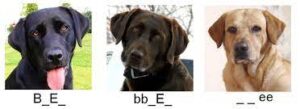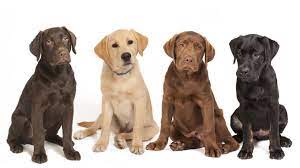In this article, we discuss labrador retriever epistasis. Unlocking the genetic mysteries of Labrador Retrievers, epistasis plays a crucial role, in shaping their traits beyond simple inheritance. so let me know about labrador retriever epistasis.
Labrador Retriever epistasis, simply put, refers to how certain genes can influence or mask the effects of other genes in these dogs. It’s like a genetic switchboard controlling traits such as coat color, size, and behavior. Understanding this interplay helps explain these popular pets’ diverse appearances and temperaments.
so for more information, you get more details about the labrador retriever epistasis.
Labrador Retriever Epistasis
In simple terms, epistasis is like one gene bossing around another gene, changing how it works. For Labrador Retrievers, this can mean deciding what color their fur will be or how big they’ll grow. So, it’s like a genetic game of “Simon Says” that shapes their appearance and characteristics.

Understanding Epistasis in Coat Color
Labrador Retrievers come in different fur colors like black, chocolate, and yellow. This happens because of lots of genes working together, making pigment and spreading it around. For instance, some genes decide how much black or yellow pigment to make, and others tell them where to put it, creating the beautiful coat colors we see in Labs.
Genes Involved in Labrador Coat Color
In Labrador Retrievers, coat color is decided by a couple of important genes: MC1R and ASIP. MC1R decides if the fur will be black or chocolate, while ASIP controls where the pigment goes, intensifying the color or adding yellow/red shades. So, these genes are like the painters deciding the color and style of the Lab’s coat!

Epistatic Interactions and Coat Color Phenotypes
When genes like MC1R and ASIP team up, they can change how a Labrador’s coat looks. Sometimes, certain versions of the ASIP gene can cover up what the MC1R gene wants to do, making the coat turn yellow even if it’s supposed to be black or chocolate. This shows how genes can work together in unexpected ways to shape a Lab’s appearance.

Other Traits Influenced by Epistasis
Besides fur color, epistasis can also change how other parts of a Labrador look, like their ears, tail, and how big they are. The genes for these traits can mix up in tricky ways, making Labradors look different even if you just look at one gene at a time. It’s like a genetic puzzle where the pieces don’t always fit the way you expect!
Conclusion
In summary, Labrador Retriever epistasis reveals how genes team up to influence traits beyond what we might expect from simple inheritance.
It’s like a genetic dance where one gene can lead or follow another, shaping everything from coat color to ear shape and size. Understanding these genetic interactions helps us appreciate the unique beauty and diversity of these beloved pets.

Pingback: Labrador retriever colors : A Comprehensive Guide ( 6 Labrador retriever colors ) - Labrador Pro